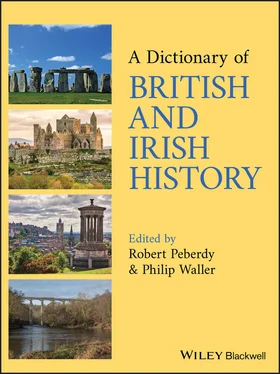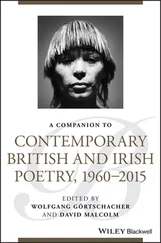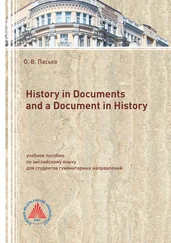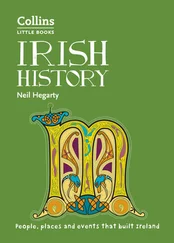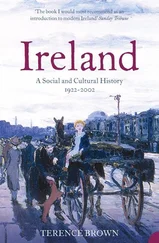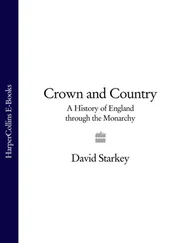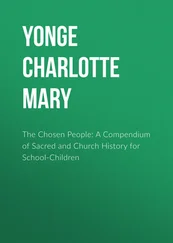Between 1689 and 1815, the Army (British from 1707) participated in six major wars ( see FISCAL–MILITARY STATE), each entailing rapid expansion (from around 20,000) and contraction. For example, strength during the War of the AUSTRIAN SUCCESSION (1740–8) averaged 62,000. Expansion during the FRENCH REVOLUTIONARY AND NAPOLEONIC WARS (1793–1815) peaked at 250,000 (1813). Domestic roles included defence (e.g., against JACOBITE REBELLIONS) and ‘police’ work (e.g., suppressing riots). Some regiments were stationed overseas.
After 1815, the Army was again reduced, declining to 88,000 in 1838, then re‐expanded, partly for imperial defence; in 1846, two‐thirds of infantry were stationed abroad. Between 1815 and 1899 the Army undertook colonial campaigns. The only major war, the CRIMEAN WAR (1854–6), found the Army wanting. Reforms implemented by Edward CARDWELL (1868–71) introduced short service, abolished purchase of officers’ commissions, and created specific regimental districts. Further reforms after the (Second) BOER WAR (1899–1902) included creation of a general staff (1906).
Unprecedented expansions, involving CONSCRIPTION, were required by WORLD WAR I (1914–18, to 3.5 million in 1918) and WORLD WAR II (1939–45, 3 million in 1945). Imperial commitments shrank with DECOLONIZATION (1947–8, 1957–1960s), but were counterbalanced by the COLD WAR (1947–91) and TROUBLES in Northern Ireland (1969–90s). Army strength of 152,000 in 1990 was reduced to 91,000 by 2014. See also MILITARY SERVICE, ENGLAND FROM 1066 TO MID 17TH CENTURY; ESHER, 2ND VISCOUNT; HALDANE, R.B.; WORLD WAR I, BRITISH ARMY; MILITIAS, ENGLAND AND WALES.
ARMY, ENGLISH AND BRITISH, IN IRELAND, LATE 17TH–18TH CENTURIES
In May 1660 the Parliamentary army of occupation, comprising possibly 11,000 Protestant soldiers, switched allegiance to King CHARLES II. Reduced to 7000 by the mid 1660s and dispersed, it was reorganized into regiments between 1677 and 1683. Kilmainham Hospital (Ireland’s largest civil building, in Co. Dublin) was completed in 1684 for injured and retired soldiers.
From 1686 (under JAMES VII/II), the earl of TYRCONNELL extensively replaced Protestants with Catholics and expanded the Army to 45,000 (so‐called ‘Jacobite Army’). After defeat in the WILLIAMITE WAR (1688–91), 12,000 soldiers left Ireland under the treaty of LIMERICK and the remainder were disbanded.
In 1699 (under WILLIAM III), the English Parliament authorized 12,000 (Protestant) soldiers of the English Army to be stationed in Ireland (increased to 15,000 in 1769), and civil administrative departments were developed. The ‘Irish establishment’ was funded by the Irish Parliament, necessitating biennial meetings to pass supply Acts ( see PARLIAMENT, IRELAND). Army units were based in specially built barracks around the country, and sometimes assisted EXCISE and CUSTOMS officers and JUSTICES OF THE PEACE, underpinning the PROTESTANT ASCENDANCY. Catholics were recruited from the 1750s (at first covertly), and the need for recruits encouraged concessions ( see CATHOLIC RELIEF AND EMANCIPATION). Military forces (of various kinds) expanded to 76,000 during the French Wars of the 1790s, and were reduced drastically after 1802.
After the UNION OF IRELAND AND GREAT BRITAIN (1801), the Irish military establishment was brought under British administration. Up to 30,000 soldiers continued to be stationed in Ireland until 1922. See also IRISH BRIGADES; MILITIAS, IRELAND; CURRAGH ‘MUTINY’.
ARMY, SOUTHERN IRELANDsee DEFENCE FORCES, SOUTHERN IRELAND ARMY COMRADES' ASSOCIATIONIn the IRISH FREE STATE, a political‐military organization founded on 9 Feb. 1932, mainly by ex‐members of the National Army, to uphold the State and provide physical support for CUMANN NA N GAEDHAEL. From 24 March 1933, when it adopted a new uniform, the organization's members (about 30,000) were popularly called ‘Blueshirts'. Eoin O'DUFFY became leader in July and it adopted the name ‘National Guard'. It was declared unlawful on 22 Aug., but became part of FINE GAEL (2 Sept.) and was reconstituted as a party section called ‘Young Ireland Association'. See also POLITICAL PARTIES, SOUTHERN IRELAND FROM 1922; FASCISM, SOUTHERN IRELAND. ARMY MUTINY, IRELANDAn incident in the IRISH FREE STATE (IFS) when two disaffected officers of the National Army, belonging to a faction called ‘Old IRA', presented demands directly to the Executive Council of the IFS (6 March 1924). They demanded abolition of the (executive) Army Council and suspension of demobilization. Their arrest provoked 50 officers to resign. Though informal concessions were made, many mutineers were arrested (18–19 March), demonstrating that the government possessed authority over agencies of the new State. See also SOUTHERN IRELAND FROM 1922; O'HIGGINS, KEVIN; DEFENCE FORCES, SOUTHERN IRELAND. ARNOLD, THOMAS(b. 13 June 1795 at West Cowes, Isle of Wight, England; d. 12 June 1842 at Rugby, Warwickshire, England, aged 46). Educated at WINCHESTER College (from 1807) and OXFORD University (from 1811), Arnold ran a private school from 1819. In 1828 he was ordained in the Church of ENGLAND and became headmaster of Rugby School. He strengthened discipline through use of prefects (sixth‐formers), and regular examinations and reports to parents, and sought to produce Christian gentlemen of strong moral character. His ideals were spread by colleagues and pupils, thereby helping to revitalize public schools. He also became regius professor of modern history at Oxford in 1841. See also GRAMMAR AND PUBLIC SCHOOLS, REFORM OF, ENGLAND AND WALES. ARRAN, EARL OFsee STEWART, JAMES ARRAN, 2RD EARL OF
(b. c .1519 at Hamilton, C Scotland; d. 22 Jan. 1575 at Hamilton, aged about 56). James Hamilton succeeded as earl in 1529. In 1542, as closest heir, he was appointed regent for MARY, QUEEN OF SCOTS. Inclined to Protestantism, Arran allied with King HENRY VIII of England (Aug. 1543), but was soon forced to renege ( see BEATON, DAVID), provoking invasions (1544, 1545, 1547). He then co‐operated with the pro‐French policy of Beaton and MARY OF GUISE, receiving the dukedom of Châtelhérault, France (1549), and resigning the regency to Mary in 1554.
From Sept. 1559 Arran supported the pro‐Protestant LORDS OF THE CONGREGATION. In 1565, after refusing a summons to court from Mary, Queen of Scots, Arran was proclaimed a traitor and fled. He returned in 1569, following her abdication (1567), and led the pro‐Mary party in the MARIAN CIVIL WAR until 1573, when he acknowledged JAMES VI. See also SCOTTISH–ENGLISH RELATIONS 1357 TO 1603.
ARRAS, CONGRESS OFPeace negotiations, during the HUNDRED YEARS WAR, held from 5 Aug. 1435 at St Waast Abbey, Arras, Flanders (a territory of the duke of BURGUNDY), involving English, French and Burgundian delegations. The unwillingness of the English and French to compromise caused stalemate. The English withdrew (6 Sept.). Philip the Good, duke of Burgundy, then rejected the English and the treaty of TROYES (1420), and recognized Charles VII as king of France (confirmed 21 Sept.). ARRAY, COMMISSIONS OFIn England and Wales, groups of men appointed to recruit able‐bodied freemen for the king’s army. First used in the late 13th century by King EDWARD I, their use declined during the HUNDRED YEARS WAR (1337–1453), but they continued until the mid 16th century when LORD LIEUTENANTS became responsible for recruitment. Commissions were reintroduced by CHARLES I in 1640 (for war against Scotland) and in May 1642 (declared unlawful by Parliament). See also MILITARY SERVICE, ENGLAND 1066 TO MID 17TH CENTURY. ARTHUR(possibly fl. late 5th century in Britain). A Briton first mentioned in the 7th‐century Welsh poem Y Gododdin (see ANEIRIN). He was celebrated in the 9th‐century Historia Brittonum as a commander who defeated SAXONS 12 times (see NENNIUS). From the 12th century King Arthur was a major figure in European literature. He probably never existed. See also POST‐ROMAN BRITAIN. ARTHUR, PRINCE OF WALES(b. 19 Sept. 1486 at Winchester, Hampshire, England; d. 2 April 1502 at Ludlow, Shropshire, England, aged 15). Eldest son and heir of King HENRY VII, Arthur was created PRINCE OF WALES on 29 Nov. 1489. He was married to KATHERINE OF ARAGON (14 Nov. 1501), under the treaty of MEDINA DEL CAMPO, but died possibly before consummating the marriage (the matter was disputed). He was succeeded as heir by his brother Henry who married Katherine (see HENRY VIII). See also COUNCIL IN THE MARCHES OF WALES. ARTHUR OF BRITTANY(b. 29 March 1187 at Nantes, Brittany; d. allegedly 3 April 1203 at Rouen, Normandy, aged 16). The posthumous son of Geoffrey, duke of Brittany (fourth son of King HENRY II), Arthur was a threat to JOHN (fifth son). In 1199 he and supporters attempted, unsuccessfully, to control parts of the ANGEVIN EMPIRE. Although John recognized Arthur's position in Brittany (1200), he was captured (Aug. 1202) by forces loyal to John and disappeared. He was allegedly murdered by John himself. ARTICLES OF RELIGION
Читать дальше
